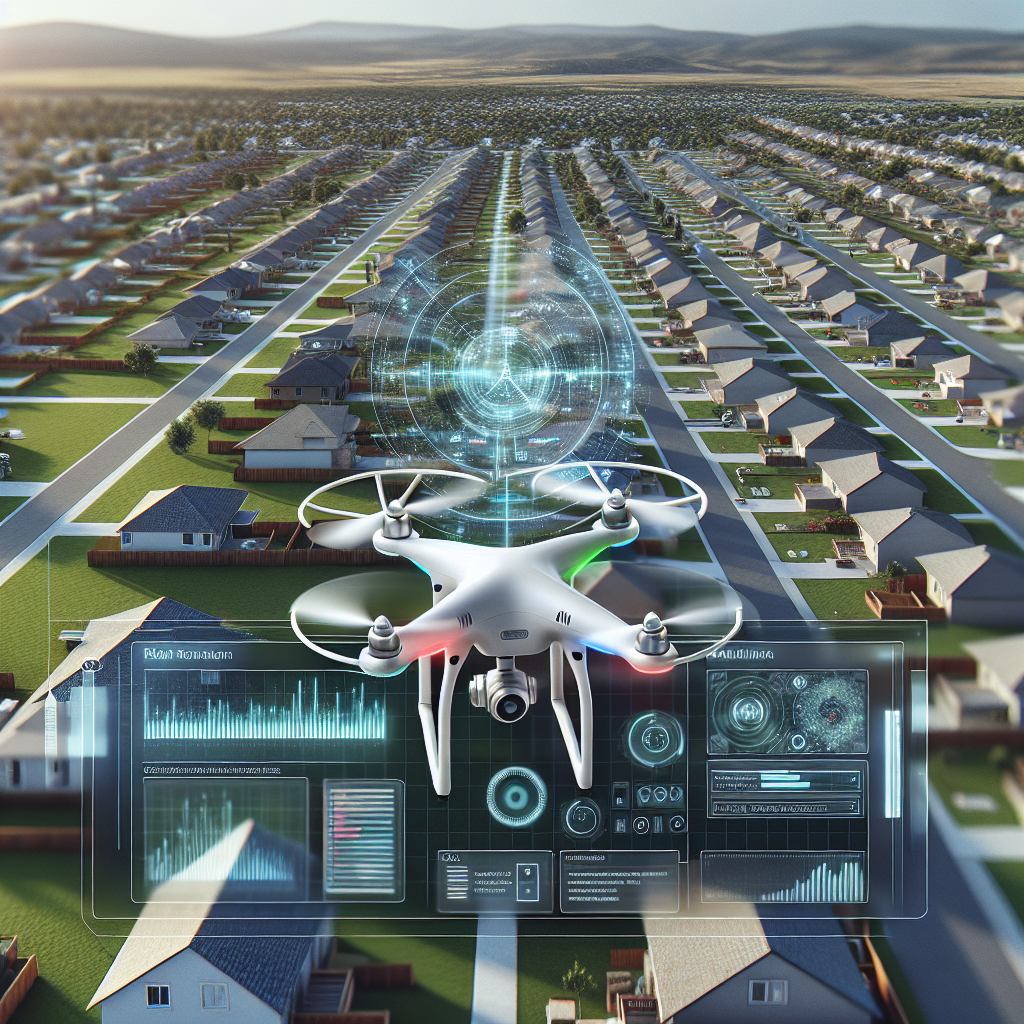AI and Drones in Real Estate Property Inspections
In recent years, the use of artificial intelligence (AI) and drones in real estate property inspections has become increasingly popular. These advanced technologies offer many benefits to property owners, buyers, and inspectors, making the inspection process more efficient, accurate, and cost-effective.
Drones, also known as unmanned aerial vehicles (UAVs), are small, remote-controlled aircraft that can capture high-resolution images and videos of properties from above. These aerial images provide a comprehensive view of the property, including its size, layout, condition, and surrounding environment. Drones equipped with cameras and sensors can also collect data on the property’s structural integrity, energy efficiency, and potential safety hazards.
AI, on the other hand, refers to the simulation of human intelligence in machines that are programmed to think, learn, and make decisions like humans. AI algorithms can analyze the data collected by drones and provide valuable insights to property inspectors and buyers. For example, AI can identify issues such as roof damage, water leaks, mold growth, and insulation problems in a property, allowing inspectors to address these issues promptly.
The combination of AI and drones in real estate property inspections offers several advantages, including:
1. Cost-effectiveness: Traditional property inspections often require inspectors to physically visit the property, which can be time-consuming and costly. By using drones, inspectors can conduct inspections remotely, reducing the need for travel expenses and manpower.
2. Time-saving: Drones can capture images and videos of a property quickly and efficiently, saving time for both inspectors and property owners. AI algorithms can analyze the data collected by drones in real-time, providing instant feedback on the property’s condition.
3. Safety: Drones can access hard-to-reach areas of a property, such as roofs, chimneys, and gutters, without putting inspectors at risk of injury. This improves the safety of property inspections and reduces the likelihood of accidents.
4. Accuracy: Drones can capture detailed images of a property from different angles, allowing inspectors to identify potential issues that may not be visible to the naked eye. AI algorithms can analyze these images and provide accurate assessments of the property’s condition.
5. Scalability: AI and drones can be used to inspect multiple properties simultaneously, making it easier for property owners and inspectors to manage large portfolios of properties. This scalability allows for more efficient and effective property inspections.
Overall, the use of AI and drones in real estate property inspections is revolutionizing the way properties are assessed and evaluated. These technologies are transforming the inspection process, making it more streamlined, accurate, and cost-effective for all parties involved.
FAQs:
Q: How much does it cost to use AI and drones in real estate property inspections?
A: The cost of using AI and drones in real estate property inspections can vary depending on the size of the property, the complexity of the inspection, and the technology used. Generally, the cost of using drones for property inspections ranges from a few hundred to a few thousand dollars per inspection. AI software may also incur additional costs, but the benefits of using these technologies often outweigh the initial investment.
Q: Are AI and drones legal for use in property inspections?
A: Yes, AI and drones are legal for use in property inspections, as long as they comply with local regulations and privacy laws. Property owners and inspectors should obtain permission from the property owner before conducting a drone inspection, as drones may infringe on privacy rights if used without consent. Additionally, AI algorithms must comply with data protection laws and regulations to ensure the security and privacy of the property’s information.
Q: Can AI and drones replace human property inspectors?
A: While AI and drones offer many benefits to property inspections, they cannot entirely replace human inspectors. Human inspectors bring valuable experience, expertise, and judgment to the inspection process, which AI and drones may not be able to replicate. However, AI and drones can complement human inspectors by providing additional data and insights to enhance the inspection process.
Q: What types of properties can AI and drones inspect?
A: AI and drones can inspect various types of properties, including residential homes, commercial buildings, industrial facilities, and vacant land. These technologies are versatile and can adapt to different property types and sizes, making them suitable for a wide range of property inspections. Property owners and inspectors can use AI and drones to assess the condition, safety, and value of their properties more effectively.
In conclusion, the use of AI and drones in real estate property inspections is transforming the way properties are evaluated and assessed. These advanced technologies offer many benefits, including cost-effectiveness, time-saving, safety, accuracy, and scalability. By leveraging AI and drones, property owners, buyers, and inspectors can conduct more efficient and effective property inspections, leading to better decision-making and improved property management. As AI and drones continue to evolve, they will play an increasingly important role in the real estate industry, revolutionizing the way properties are inspected and evaluated.

